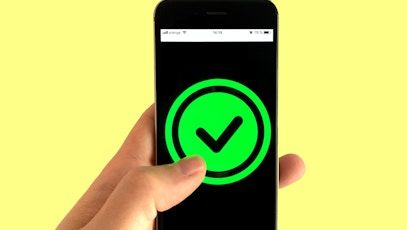Step 1: Familiarize Yourself with the Legislative Requirements in your Country
E-invoicing requirements differ from country to country. For instance, e-invoicing in the United Kingdom requires that contracting authorities accept e-invoices in line with the European Standard.
Of course, these regulations may be different in Serbia, Australia, Canada, New Zealand, or any other country.
Why is this step crucial?
For starters, some of the reasons you’ll want to get well acquainted with electronic invoicing laws in your region include:
- Approval/accreditation from your local tax authority to prove that you meet every technical requirement for e-invoice issuance, receipt, exchange, and acceptance process.
- To ensure you’re issuing e-invoices in a format that’s universally acceptable in your region.
- To determine content requirements imposed by authorities or trading partners.
- To enable archiving as per your country’s specific requirements.
- To help you abide by the data security and protection implications of exchanging documents electronically.
The point we’re making is …when implementing e-invoicing, you want to get everything right from the get-go to avoid unnecessary glitches or delays later on.
Step 2: Determine the Best Method to Rollout e-Invoicing
There are several ways to implement electronic invoicing. The choice of one method over the other depends on the specific needs and requirements of your business.
Some common implementation methods include:
- Electronic Invoicing and Cloud Archiving – Ideal for considerably small businesses that don’t exchange many documents. The method also works well if you want to discharge your ERP system or server from storing e-invoices.
- Electronic Invoicing and On-premise Archiving – Works well if your primary concern is central management and archiving at the organizational level. The option is also ideal for organizations that want to outsource the automation of business documents.
- Incoming Document Archiving and Automation of Data Entry via XML – You’re better off with this method if you don’t send many business documents but receive a considerable amount of documents and would like to save on data entry and archiving.
- Automated Data Entry for Incoming Business Documents and Outgoing Orders – Ideal for organizations that exchange many business documents with their trading partners. The method also works for businesses that want to reduce the number of documents handled by the accounting and buying departments.
Sure, understanding these methods may prove challenging, especially if you’re a first-timer.
However, you can work with your IT and accounting team and an Access Point Provider to determine which methods work best for your business.
Step 3: Check How Many of your Trading Partners are using e-Invoicing
One of the benefits of e-invoicing is to help you get paid on time.
It is important, therefore, to determine if your trading partners can receive e-invoices. The idea is to help you measure the return on investment (ROI) and transition speed.
At this point, you’ll want to do the following:
- List all your trading partners
- Determine which clients can receive e-invoices. Categorize your clients into two groups – those that can receive e-invoices and those that cannot
Ideally, you want to ensure that most of your trading partners can at least receive e-invoices.
You must be thinking – why are we not talking about your trading partners not sending e-invoices.
Well, that’s because as long as the other party can send PDF invoices as an email attachment, you can always convert them into e-invoices. Speaking of PDF invoices, you can learn more about how to convert a PDF invoice to an e-Invoice in 3 steps.
What if most of your trading partners cannot receive electronic invoices?
You need to sensitize them why they should embrace e-invoices. After all, e-document exchange is the future of doing business.
Step 4: Choose a Provider
The next step involves finding an e-invoicing provider to connect you to an electronic invoicing network such as PEPPOL. You want to deal with a provider that can fulfill your business’s specific needs as outlined in step 2.
That said, the best e-invoicing provider should meet the following selection criteria:
- Guarantee compatibility with your local e-invoicing regulations
- Provide a customized solution for your specific business needs
- Guarantee to rollout electronic invoicing your organization quickly
- Offer a solution that is in line with your budget. It is essential to mention, though, that implementing e-invoicing isn’t necessarily cheap. However, the cost may vary depending on your particular needs.
- Provide excellent customer service
- Adequate technological capacity
- Have enough experience and knowledge
- Guarantee interoperable communication
- Be a PEPPOL certified Access Point Provider
Step 5: Train Your Teams
While the basics of electronic invoicing are simple to understand, your teams, especially IT and accounting, could benefit from orientation on how e-invoicing works. That way, they can leverage the system and make the most out of it.
But, who can train your teams?
Well, a good e-invoicing provider shouldn’t have a problem training your staff.
Note – It is important to keep encouraging your existing and new trading partners to adopt e-invoicing to ensure you reap 100% ROI in the long run.
Unimaze Can Help You Get Started with your e-Invoicing Project
As stated, your choice of an electronic invoicing provider plays a significant role in determining your e-invoicing project’s success.
At Unimaze, we’re dedicated to making sure that your transition from paper invoices to e-invoices is smooth, dynamic, and completed in the shortest time possible.
We’re a PEPPOL certified Access Point Provider with a wealth of experience and a dedicated support team.
… So, are you ready to get started with e-Invoicing?



